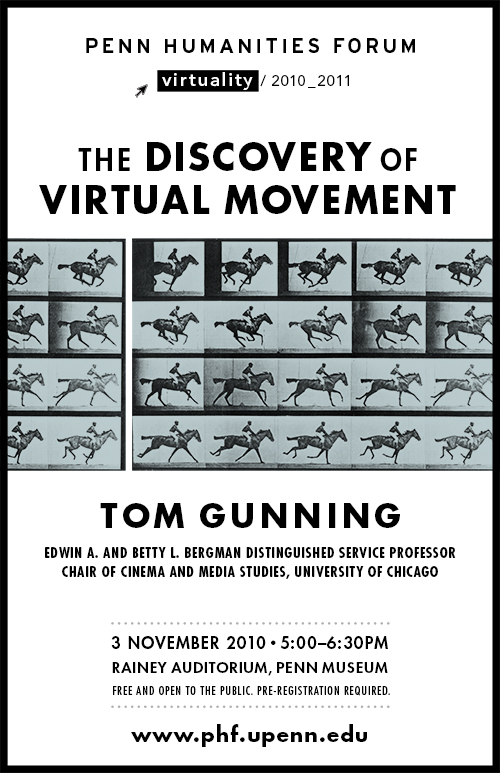The idea of a moving image poses a nearly paradoxical form of virtuality. Can an image move and still be an image? Is such movement an illusion? What, finally, is a “moving picture”? Tom Gunning, distinguished authority on early film and its emergence from still photography and other nineteenth-century innovations, is uniquely qualified to place such questions in a broad context of early modernist culture. Explore with him the invention of virtual motion.
Tom Gunning is the Edwin A. and Betty L. Bergman Distinguished Service Professor in the Department of Cinema and Media Studies at the University of Chicago. He works on problems of film style and interpretation, film history, and film culture. His published work has concentrated on early cinema from its origins to World War I, as well as on the culture of modernity from which cinema arose. His book, D.W. Griffith and the Origins of American Narrative Film (University of Illinois Press, 1994), traces the ways film style interacted with new economic structures in the early American film industry and with new tasks of story telling. He has also written on genre in Hollywood cinema and on the relation between cinema and technology.
His other interests include international early and silent cinema; American avant-garde cinema; Hollywood film genres; Japanese cinema; directors' styles; film historiography; film exhibition and spectatorship; and Modernist cinema of the 1920s. In 2009 he was the first film scholar to receive an Andrew A. Mellon Distinguished Achievement Award, and in 2010 was elected to the American Academy of Arts and Sciences.
Edwin A. and Betty L. Bergman Distinguished Service Professor
Chair of Cinema and Media Studies
University of Chicago



